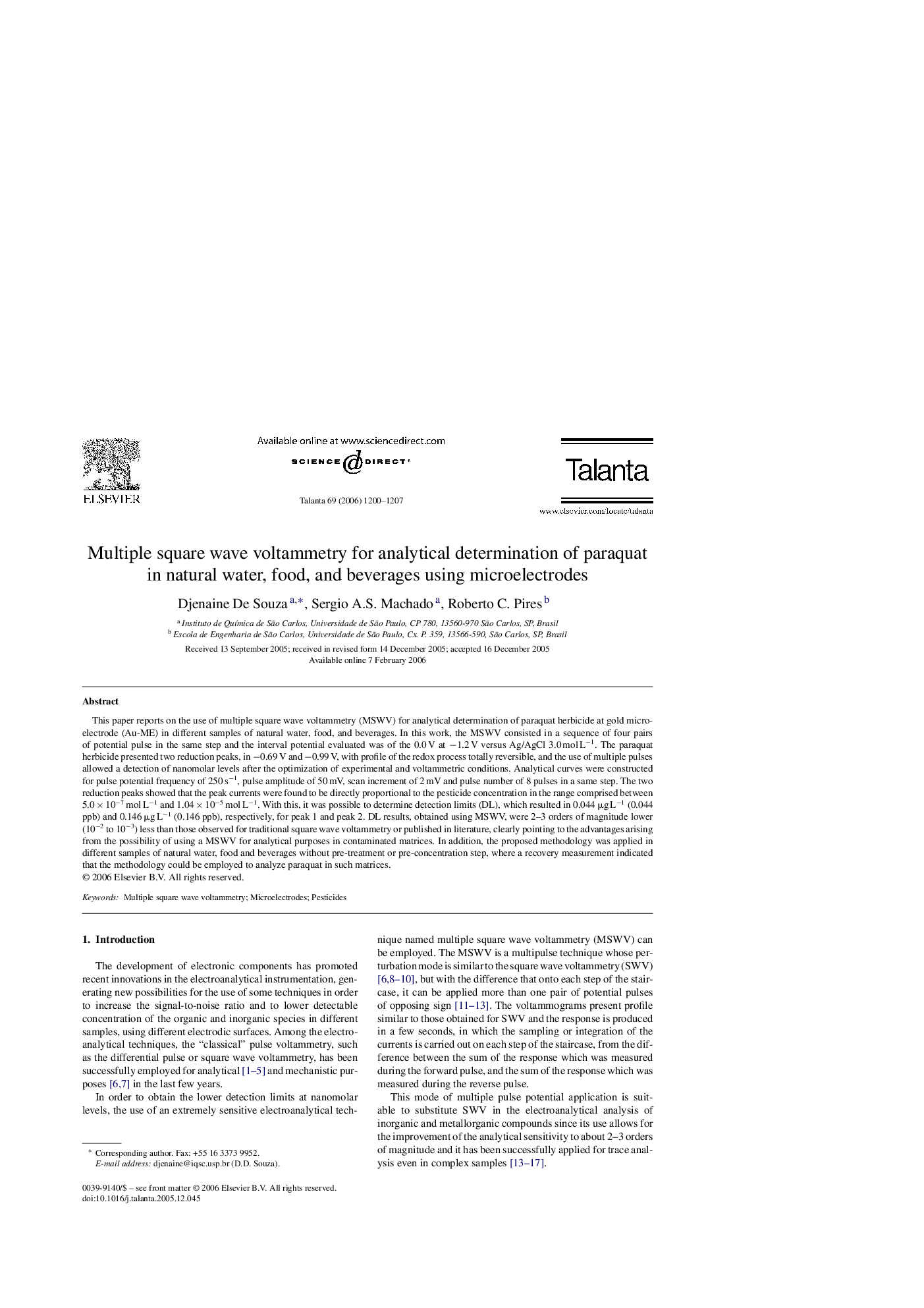| Article ID | Journal | Published Year | Pages | File Type |
|---|---|---|---|---|
| 1245692 | Talanta | 2006 | 8 Pages |
This paper reports on the use of multiple square wave voltammetry (MSWV) for analytical determination of paraquat herbicide at gold microelectrode (Au-ME) in different samples of natural water, food, and beverages. In this work, the MSWV consisted in a sequence of four pairs of potential pulse in the same step and the interval potential evaluated was of the 0.0 V at −1.2 V versus Ag/AgCl 3.0 mol L−1. The paraquat herbicide presented two reduction peaks, in −0.69 V and −0.99 V, with profile of the redox process totally reversible, and the use of multiple pulses allowed a detection of nanomolar levels after the optimization of experimental and voltammetric conditions. Analytical curves were constructed for pulse potential frequency of 250 s−1, pulse amplitude of 50 mV, scan increment of 2 mV and pulse number of 8 pulses in a same step. The two reduction peaks showed that the peak currents were found to be directly proportional to the pesticide concentration in the range comprised between 5.0 × 10−7 mol L−1 and 1.04 × 10−5 mol L−1. With this, it was possible to determine detection limits (DL), which resulted in 0.044 μg L−1 (0.044 ppb) and 0.146 μg L−1 (0.146 ppb), respectively, for peak 1 and peak 2. DL results, obtained using MSWV, were 2–3 orders of magnitude lower (10−2 to 10−3) less than those observed for traditional square wave voltammetry or published in literature, clearly pointing to the advantages arising from the possibility of using a MSWV for analytical purposes in contaminated matrices. In addition, the proposed methodology was applied in different samples of natural water, food and beverages without pre-treatment or pre-concentration step, where a recovery measurement indicated that the methodology could be employed to analyze paraquat in such matrices.
